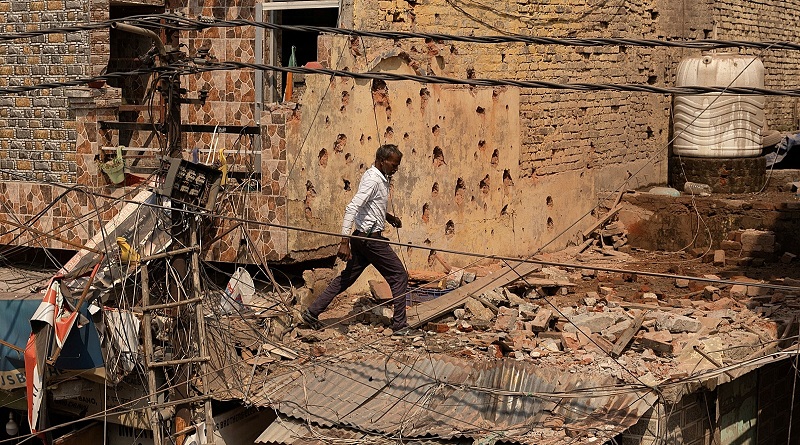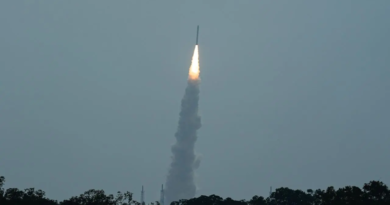India-Pakistan Border Tensions Ease After 4 Days of Drone and Missile Attacks

India-Pakistan Ceasefire Holds Amid Tensions: A Fragile Peace
In a significant development, India and Pakistan have declared a ceasefire after days of intense military clashes, including missile and drone strikes, along their shared border. The truce, announced on May 10, 2025, followed diplomatic efforts led by U.S. Vice President JD Vance and Secretary of State Marco Rubio, with additional support from the UK and Saudi Arabia. Both nations claimed victory, fueling nationalistic celebrations, while accusing each other of initial ceasefire violations at the Kashmir border.
Operation Sindoor: India’s Retaliatory Strikes
The conflict escalated after a terrorist attack in Kashmir killed 22 people, mostly Hindu tourists. In retaliation, India launched Operation Sindoor, targeting Pakistani military bases. Pakistan responded with military actions of its own. Despite the ceasefire, underlying tensions over the Kashmir dispute remain unresolved. Civilian casualties and destruction have been significant, particularly in areas like Poonch and Neelum Valley.
U.S. Mediation and Diplomatic Efforts
The ceasefire came after intense diplomatic efforts led by U.S. Secretary of State Marco Rubio and Vice President JD Vance, who urged both sides to de-escalate. President Trump lauded the agreement on social media. However, shortly after the ceasefire began, India accused Pakistan of violations, which Islamabad denied. While initial talks were promised, India’s Foreign Ministry rebuffed further dialogue claims.
Military Losses and Border Tensions
The Indian Army lost five soldiers in Operation Sindoor, launched in response to a terror attack in Jammu and Kashmir’s Pahalgam, while the Pakistan Army reportedly lost nearly 35 to 40 personnel between May 7-10 in firing across the Line of Control, said the Army. The forward border locations in Punjab, Jammu and Kashmir, and Rajasthan witnessed a night of peace after four days of continuous and intense drone and missile attacks from across the border. No drones were intercepted by the Indian Air Defence Systems on May 11 or after midnight. No shelling by Pakistani troops was reported from the border areas, including Akhnoor and Poonch.
Future Outlook: Fragile Peace
The recent ceasefire between India and Pakistan, brokered by the United States, has provided temporary relief after intense cross-border confrontations. However, the underlying issues, particularly the Kashmir dispute, remain unresolved, casting doubt on the durability of this peace.
Both nations have accused each other of ceasefire violations. India’s Director General of Military Operations (DGMO) emphasized a “firm and clear” intent to respond “fiercely and punitively” to any future breaches, signaling India’s readiness to defend its interests.
The international community continues to urge both sides to engage in dialogue and work towards a lasting peace. The United Nations has called for “maximum restraint,” and countries like Iran, Russia, and China have expressed concern over the escalating tensions.
Civil society members in both India and Pakistan have also advocated for dialogue, emphasizing that a peaceful resolution to the Kashmir issue is essential for regional stability.
In conclusion, while the ceasefire offers a temporary respite, the path to lasting peace requires sustained diplomatic efforts, mutual trust, and a commitment to addressing the core issues at the heart of the India-Pakistan conflict..
Conclusion: Navigating a Fragile Peace
The recent ceasefire between India and Pakistan, though offering a temporary respite, underscores the persistent volatility of the region. While the immediate threat of escalation has been averted, the underlying issues, particularly the Kashmir dispute, remain unresolved. Both nations continue to accuse each other of ceasefire violations, and the situation remains fragile. The international community continues to urge both sides to engage in dialogue and work towards a lasting peace.
The United Nations has expressed hope that this ceasefire will provide an opportunity for further dialogue. UN Secretary-General Antonio Guterres welcomed the announcement by both countries to strictly observe all agreements on ceasefire along the Line of Control, emphasizing that this positive step could pave the way for renewed discussions .
In conclusion, while the ceasefire offers a temporary respite, the path to lasting peace requires sustained diplomatic efforts, mutual trust, and a commitment to addressing the core issues at the heart of the India-Pakistan conflict.






whoah tthis bblog is grewt i really like stusying youur posts.
Keep upp thee good work! You recognize, lits oof persons aree looking aroubd for this info,
you couhld aidd them greatly.
As a Newbie, I am constantly browsing online for articles that can help me. Thank you
3nqkc7